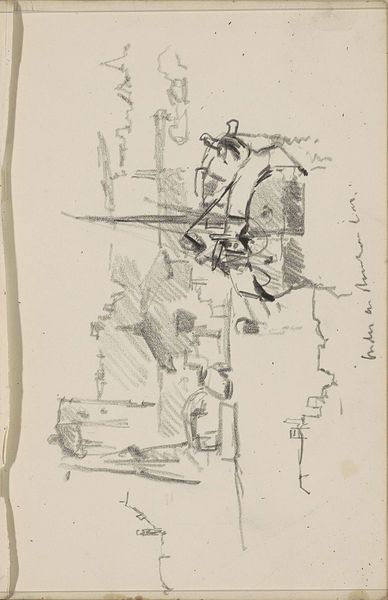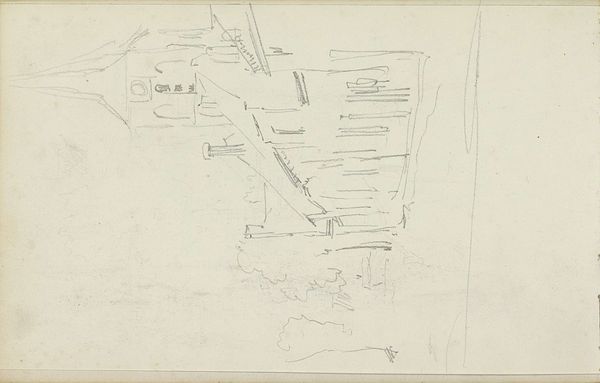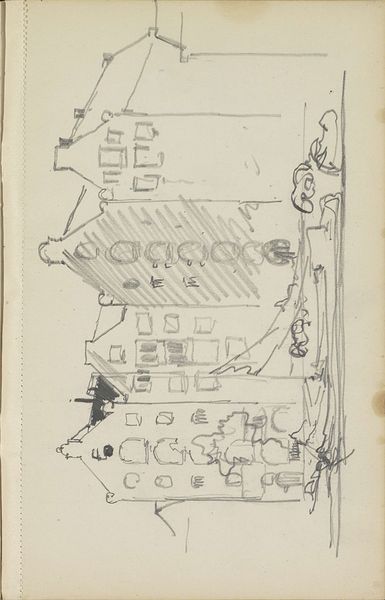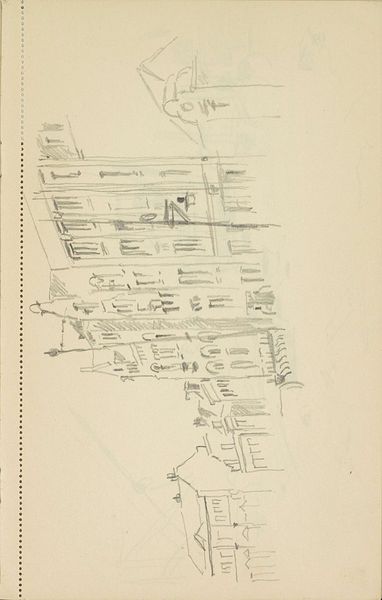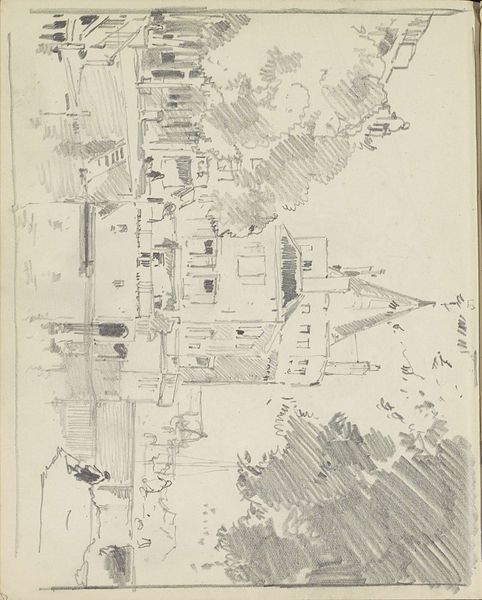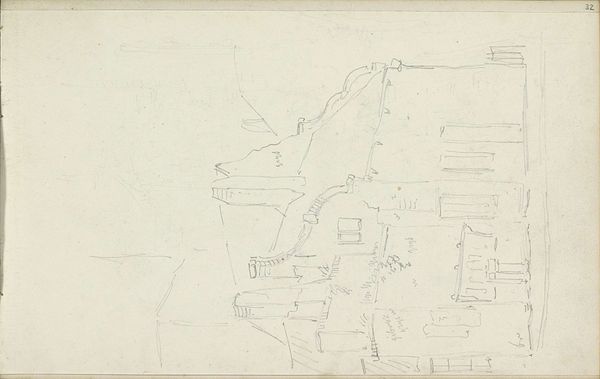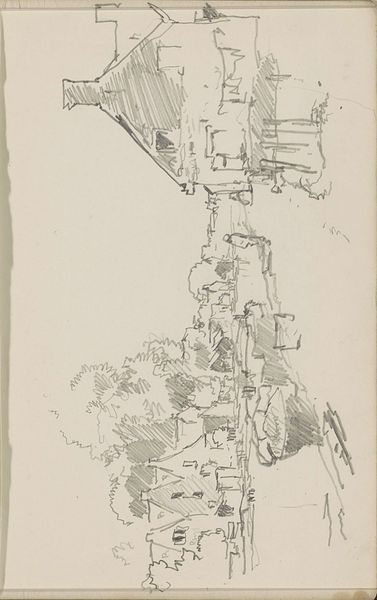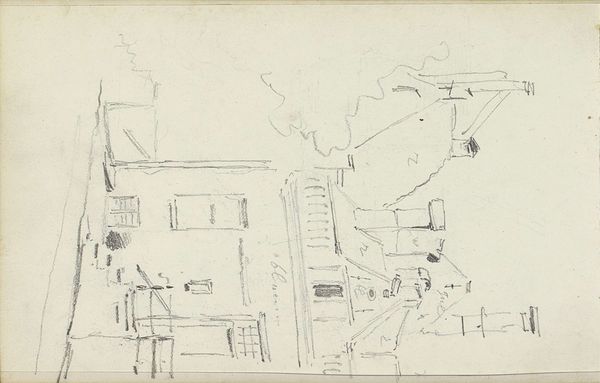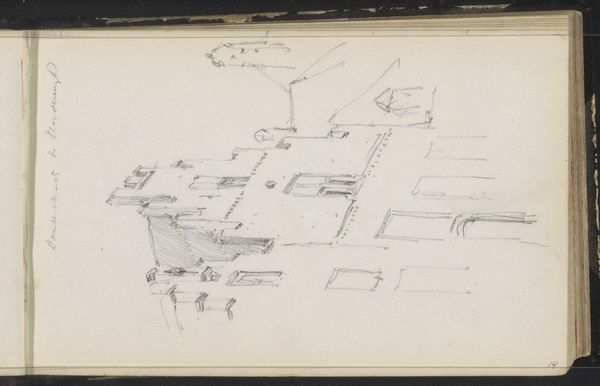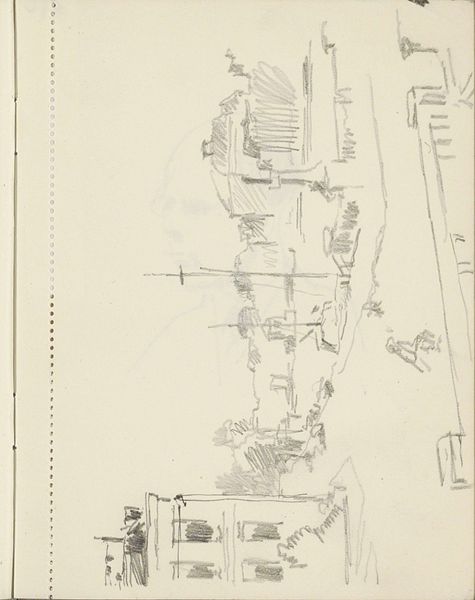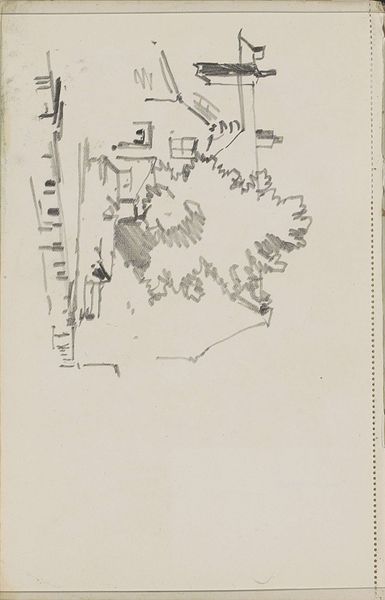
drawing, pencil, graphite
#
drawing
#
dutch-golden-age
#
pencil
#
graphite
#
cityscape
#
street
#
realism
Copyright: Rijks Museum: Open Domain
Curator: We're looking at "View of a Row of Warehouses" by Cornelis Vreedenburgh, dating from between 1890 and 1946. It’s a drawing, crafted with pencil and graphite, currently held here at the Rijksmuseum. Editor: Wow, there’s a nervous energy to this piece; a study of a city rendered in jagged lines and shadowed blocks. It reminds me of architectural dreams—or perhaps anxieties. Curator: Indeed. Vreedenburgh here employs a realist approach, capturing a cityscape that emphasizes the geometrical structure of the warehouses. Notice how he uses graphite to create depth through variations in shading. Editor: The composition is interesting. It's almost split in two, with this looming crane mechanism sketched above the blocky warehouses. Is he suggesting a dialogue between industry and commerce, or perhaps just capturing the reality of a port city? Curator: The juxtaposition certainly prompts that interpretation. We can delve into a semiotic analysis. The warehouses, repetitive and solid, denote stability and the storage of value. The cranes are active elements, implying dynamic industry and exchange. Editor: I like how Vreedenburgh doesn't sentimentalize the scene. There’s a stark honesty in the lines, which adds to the overall sense of an industrialized world. It almost lacks human presence but hints at their endeavor. Curator: Precisely. The drawing resists idealization. It offers a relatively unembellished perspective on urban architecture, prioritizing function and form, and the industrial. Editor: You know, it almost feels unfinished, a moment caught in time. Like the city is still growing and adapting. Curator: And such perceived "unfinishedness" reveals the process, underscoring the artist’s presence as an observer of, and participant in, this modern landscape. It certainly resonates differently today when so many warehouses stand derelict or converted to other uses. Editor: It really is an interesting intersection of the concrete and the abstract, where industrial utility becomes unexpectedly expressive, the hand of the artist still so present. Curator: I agree. This examination highlights not just Vreedenburgh's skills, but also the intrinsic beauty of such spaces—offering us both documentation and compelling semiotic interplay to study and ponder.
Comments
No comments
Be the first to comment and join the conversation on the ultimate creative platform.
